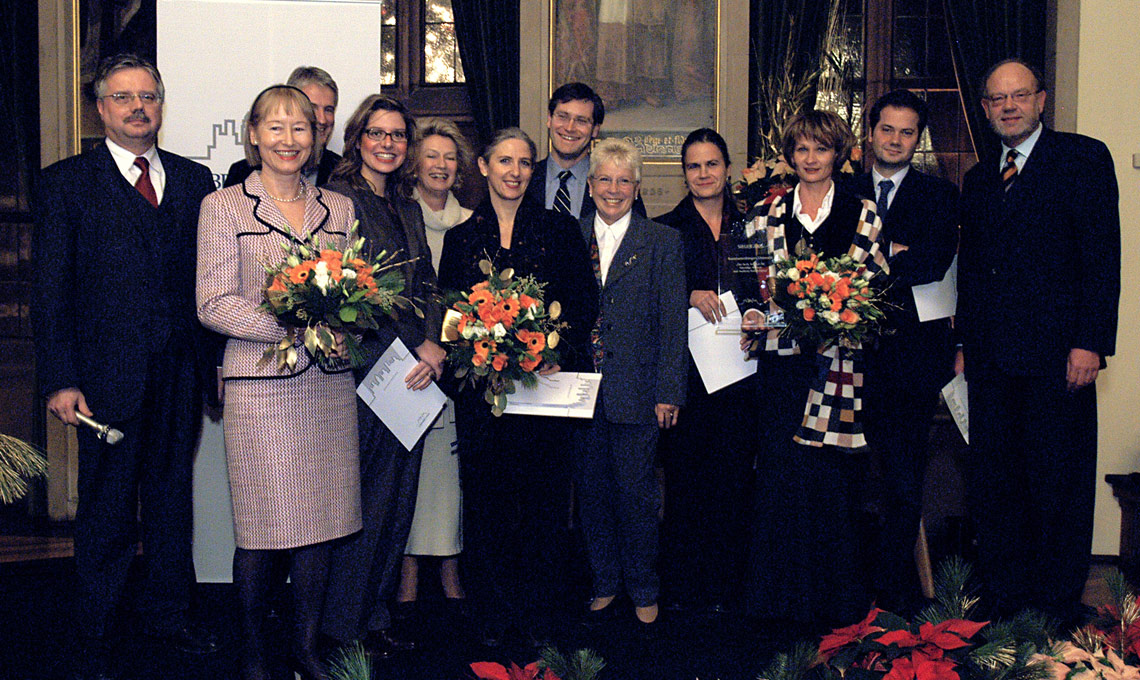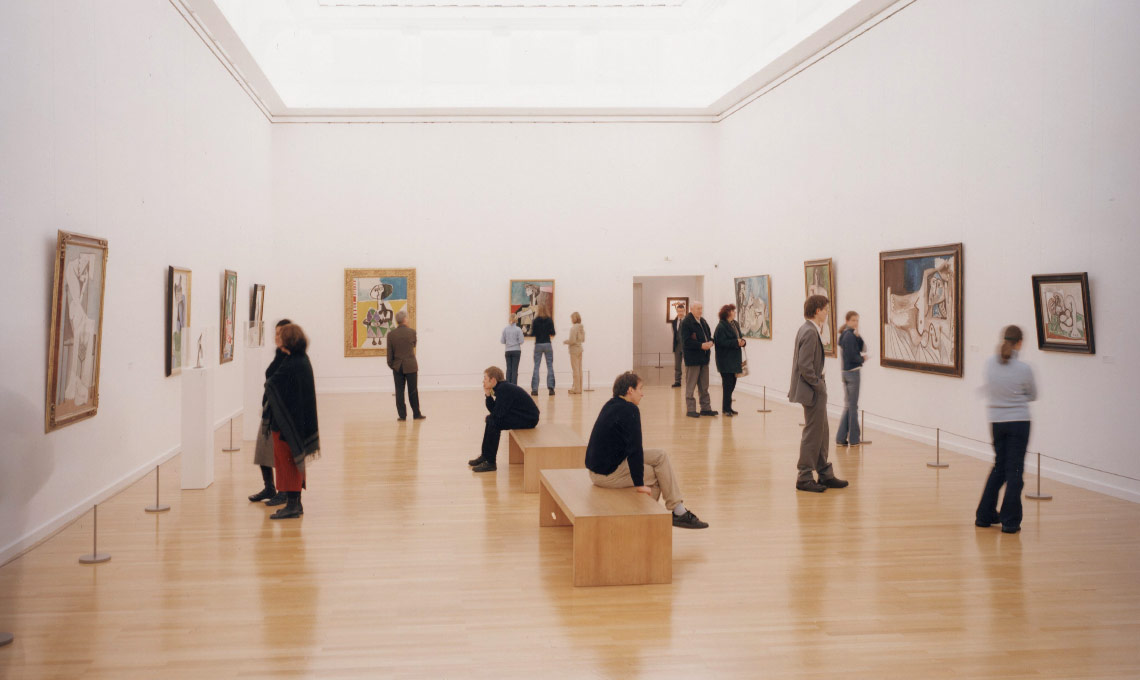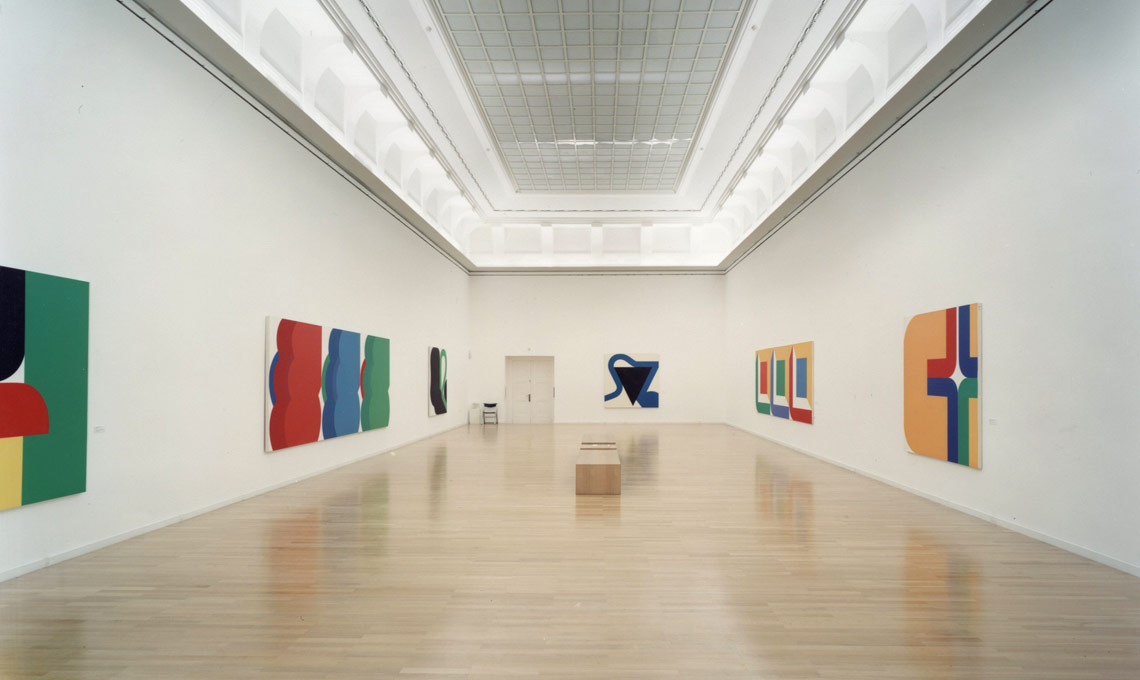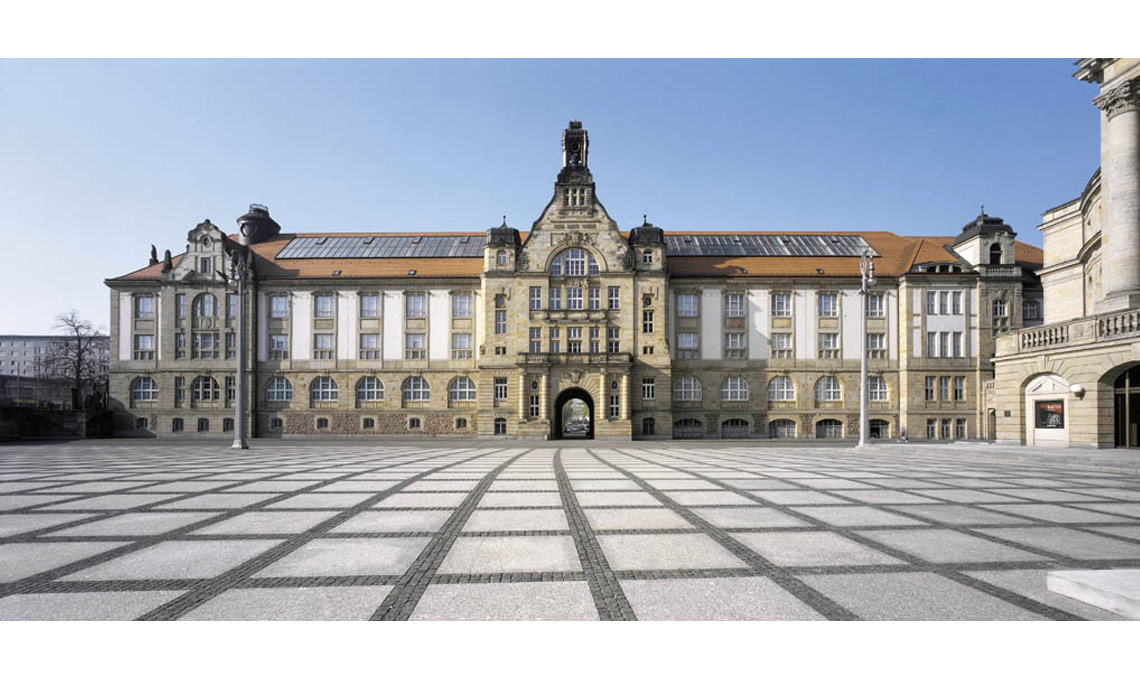Award set up by the Foundation
The “Lebendige Stadt” Foundation presents a Foundation Award each year in recognition of innovative civic projects such as particularly outstanding cultural and civic marketing events, successful city displays comprising elements such as light, sound and water (as temporary or permanent installations), and projects in the field of building conservation and tourism, especially if these are of cultural or artistic value.
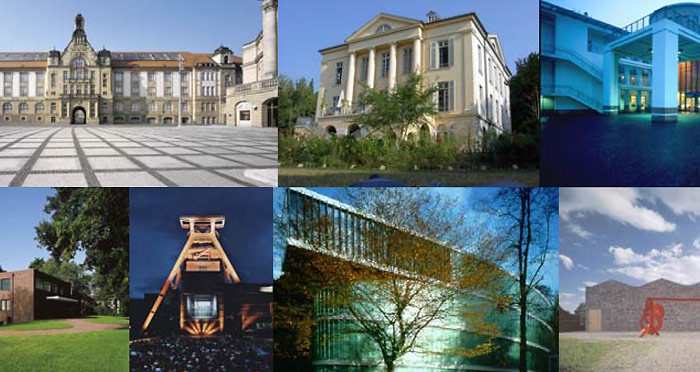

Fondation Award 2003
the best museum concept
Foundation Award 2003
- 2003 Foundation Award with cash prize of 10,000 euros goes to Chemnitz Art Gallery
- Festive award ceremony in the Kaisersaal hall of the Frankfurter Römer venue
- Special mentions for six further cultural location
The „Lebendige Stadt” Foundation presented this year's Foundation Award for the best museum concept to Chemnitz Art Gallery. In the presence of Frankfurt Lord Mayor Petra Roth, Chairman of the Board of Trustees Alexander Otto handed over the award carrying a cash prize of 10,000 euros in the Kaisersaal hall of the Frankfurter Römer venue in front of 200 invited guests on the evening of Wednesday, December 10, 2003.
The theme of the competition for the 2003 Foundation Award was „The best concept for lively museums and modern cultural locations”.
The 14-strong jury chaired by architect Christoph Ingenhoven selected Chemnitz Art Gallery as the winner from a total of 163 entries. Six further cultural locations received honorable mentions: the Schirn Art Gallery in Frankfurt am Main, the „Museum Insel Hombroich” in Neuss, the „Haus Lange” and „Haus Esters” museums in Krefeld, the „Zeche Zollverein” coalmine industrial complex in Essen, the Neanderthal Museum in Mettmann and the „Erfahrungsfeld Freudenberg” cultural venue in Wiesbaden. Petra Roth praised the work and commitment of the museums and cultural facilities: "The cultural landscape would be a lot barer without the efforts of volunteers and honorary staff and without all these innovative concepts."
It was the unanimous view of the jury that Chemnitz Art Gallery and its concept generate important stimuli for the city in Saxony and that the high quality standards set by the venue are also recognized by the public at large. According to the jury, Chemnitz Art Gallery has succeeded in creating an atmosphere of hope and optimism in exemplary fashion in recent years. The art collections with their rich history have become a focal point of attraction for the population of Chemnitz and help to ensure the existence of an unusually varied and vibrant cultural scene in the city. Regular concerts, readings and symposiums have made the art gallery a lively center of urban culture.
Chairman of the Board of Trustees Alexander Otto, who presented the Foundation Award carrying a cash prize of 10,000 euros, was delighted by the level of interest in the competition: "163 submitted highly professional museum concepts provide an excellent basis for the Foundation to benefit from the exchange of know-how in this sector."
Due to the wide variety of approaches adopted by the submitted entries, the jury decided to give special mentions to six other highly innovative projects – the Schirn Art Gallery in Frankfurt am Main, the „Museum Insel Hombroich” in Neuss, the „Haus Lange” and „Haus Esters” museums in Krefeld, the „Zeche Zollverein” coalmine industrial complex in Essen, the Neanderthal Museum in Mettmann and the „Erfahrungsfeld Freudenberg” cultural venue in Wiesbaden.
The Neanderthal Museum in Mettmann, which invites visitors on a journey through four million years of human history, was praised as being particularly visitor-focused and is considered one of the most successful museums in the region due to its vibrant and attractive operating concept.
The „Erfahrungsfeld Freudenberg” in Wiesbaden takes a totally different approach. The site is a rundown castle on the outskirts of the Hessen state capital which has been renovated step by step by the „Society for Nature and Art” since 1993. Visitors can gain a wide range of new experiences by performing scientific experiments and on their tour along a path featuring acoustic, visual and touch-based stimuli and installations. The venue is funded to the tune of 90 percent by admission proceeds and private income and run by honorary staff. The jury described this highly unorthodox concept as being particularly worthy of praise.
The „Zeche Zollverein” coalmine industrial complex in Essen is a UNESCO World Heritage Site and, in the opinion of the jury, a model for successful structural change which generates visionary and future-oriented stimuli for the entire region. Over time, the „Zeche Zollverein” complex has been transformed from one of Europe's most modern coalmine locations into a unique design and cultural center. Today, the „Zollverein” is a multifunctional playscape as well as a cultural venue, a museum and a monument. As emphasized by the jury, the „Zeche Zollverein” has become a new focal point for the Ruhr metropolitan region.
The jury praised the „Museum Insel Hombroich” in Neuss as being a very special kind of „lively museum” and a venue that plays a role in the image and identity of the region. In keeping with the motto „Art Parallel to Nature”, the buildings dedicated to the works of art and the artists are always in direct contact with the surrounding landscape. According to the statement issued by the jury, the exhibitions, discussions and a constantly changing natural setting represent a special and unusual way of raising interest levels in art.
The Schirn Art Gallery in Frankfurt am Main is experiencing a strong revival. Since new director Max Hollein took office in 2001, visitor numbers have increased considerably and the venue has enjoyed growing popularity. This success has been driven by new ideas and the new, modern positioning of the venue which the jury described as exemplary. The concept for the art gallery not only focuses on high-quality art but is also geared towards effective marketing and entrepreneurial responsibility.
The „Haus Lange” and „Haus Esters” museums – two villas built for two textile magnates in Krefeld by leading Bauhaus architect Ludwig Mies van der Rohe, were also praised by the jury as important venues due to their popularity with the general public and the way in which they are integrated in the region. The museums are among the various Krefeld art museums funded by the city and are seen as being an important marketing factor. Thanks to the campaign launched by a local foundation, it has been possible to raise the necessary private and public finance to completely refurbish the museums.
The 2003 Jury
Christoph Ingenhoven
Chairman of the Jury, Managing Director of Ingenhoven Overdiek Architects
Dr. Rolf Böhme
Former Lord Mayor, Freiburg
Dr. Albrecht Buttolo
Saxony State Secretary for Civic Construction and Housing
Jens Friedemann
Editor, Frankfurter Allgemeine Zeitung
Dr. Roland Gerschermann
Managing Director, Frankfurter Allgemeine Zeitung
Prof. Dr. Bernhard Graf
Head of the Institute for Museum Studies, Berlin
Hermann Henkel
Director of the HPP architects’ firm
Prof. Dr. Wilhelm Hornbostel
Director of the Museum für Kunst und Gewerbe, Hamburg
Thomas-Erik Junge
City Councillor, Kassel
Friedel Kellermann
Managing Director of the RKW architects’ firm
Dr. Felix Leibrock
Cultural Director of the city of Weimar
Prof. Volkwin Marg
Managing Director of the von Gerkan, Marg & Partner architects’ firm
Manfred Ruge
Lord Mayor of Erfurt
Peter Strieder
Senator for Civic Development, Berlin
